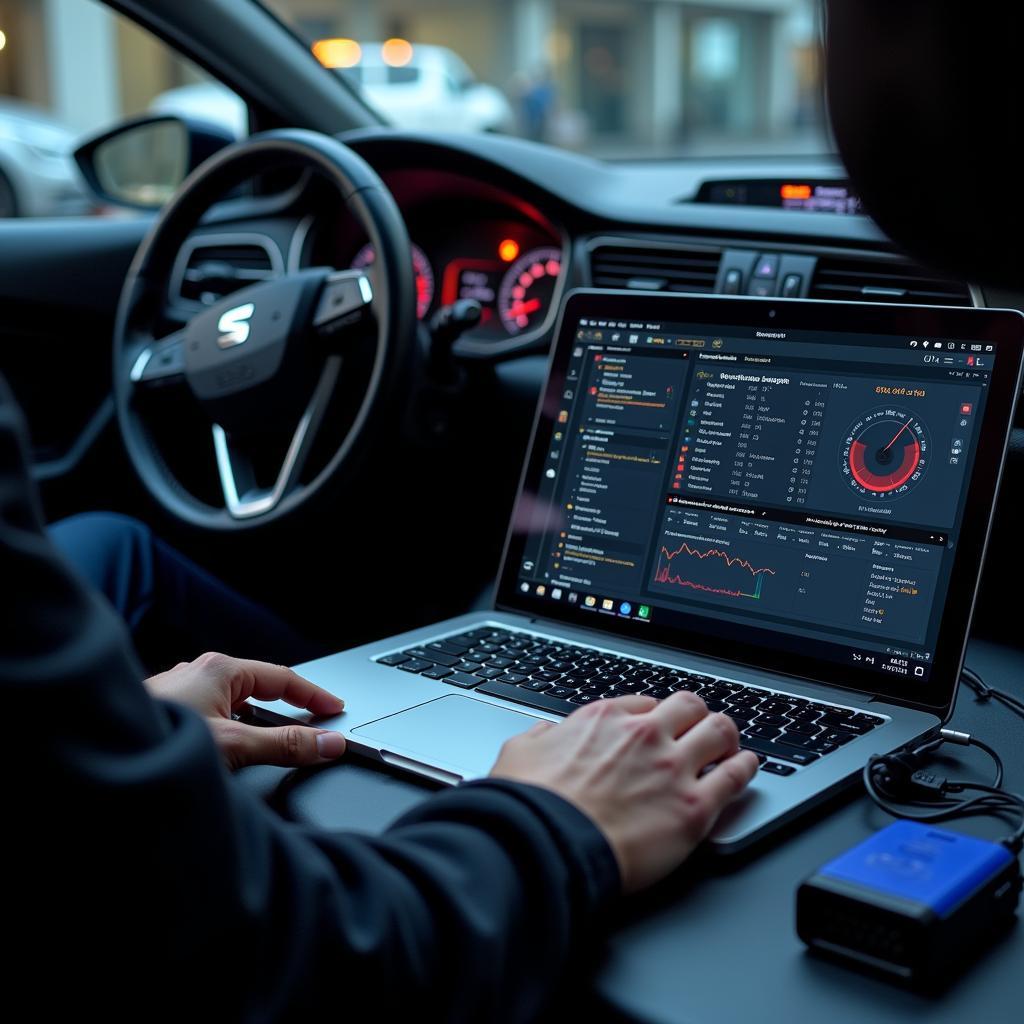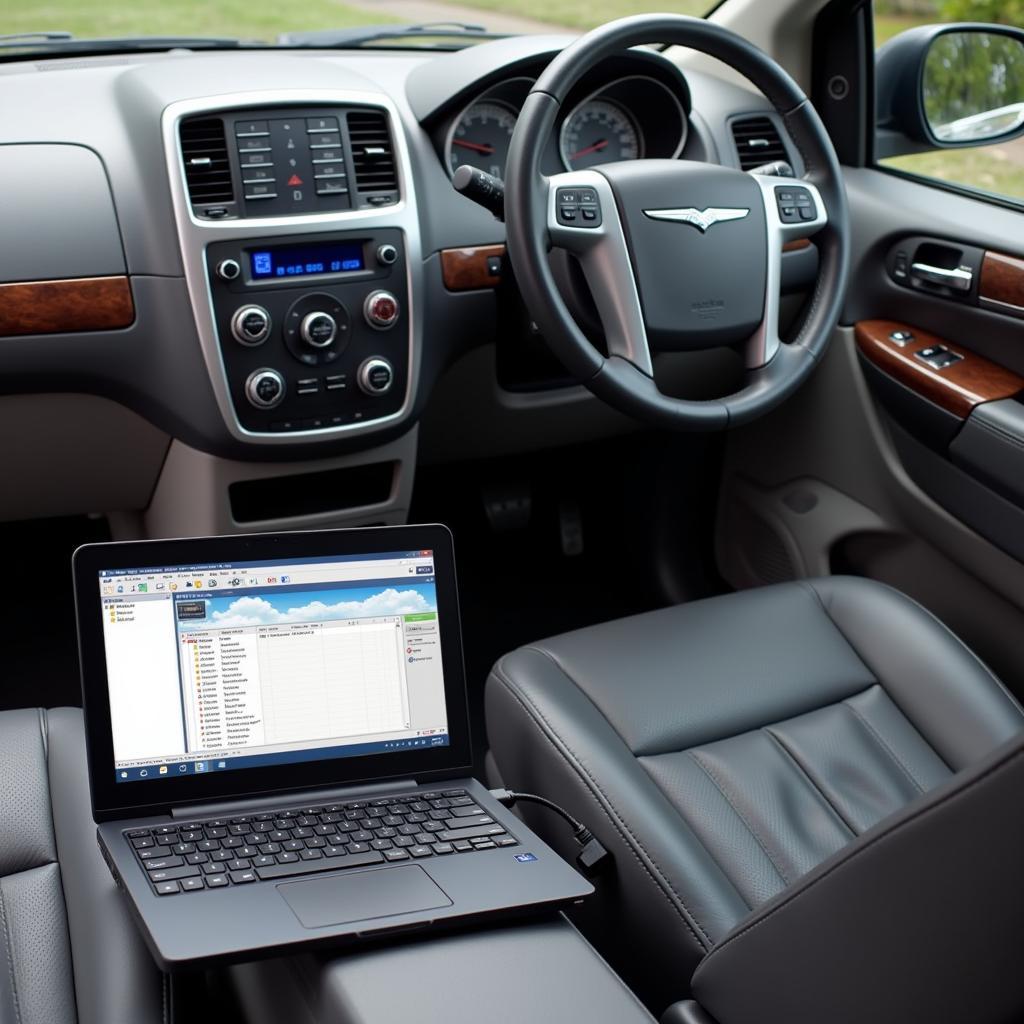Understanding your Seat car dashboard warning lights is crucial for maintaining your vehicle’s health and safety. These lights act as your car’s communication system, alerting you to potential issues before they escalate into major problems. From a simple low tire pressure warning to a more complex engine malfunction, knowing what each light signifies can save you time, money, and potential roadside emergencies. This guide provides a comprehensive overview of Seat car dashboard warning lights, helping you diagnose and address problems effectively. After reading this, you will be able to understand the different warning lights, their meanings, and the appropriate actions to take.
Common Seat Dashboard Warning Lights Explained
Seat dashboard warning lights are categorized by color, indicating the severity of the issue. Red lights signal immediate attention, while yellow/amber lights suggest caution and a need for a check-up. Green/blue lights generally indicate that a system is active. Let’s delve into some of the most common Seat warning lights.
- Engine Warning Light (Yellow/Amber): This light illuminates when the engine control unit (ECU) detects a problem. It could range from a minor sensor malfunction to a more serious engine issue.
- Brake System Warning Light (Red): This light indicates a problem with your braking system, such as low brake fluid or worn brake pads. It demands immediate attention.
- ABS Warning Light (Amber/Red): The Anti-lock Braking System (ABS) light indicates a potential issue with your ABS system. While you might still be able to brake, the ABS functionality might be impaired.
- Airbag Warning Light (Amber/Red): This signifies a problem with the airbag system. It could mean the airbags might not deploy in a crash.
- Battery Warning Light (Red): This light indicates an issue with the charging system, such as a faulty alternator or a loose battery connection.
- Coolant Temperature Warning Light (Red): A high coolant temperature can lead to engine overheating. Stop the car immediately and allow the engine to cool down if this light illuminates.
If you see a yellow warning light on your Seat Ibiza, you can find more information on our website.
What to Do When a Warning Light Appears
When a dashboard warning light appears, the first step is to identify the light and its meaning. Refer to your Seat owner’s manual for a comprehensive list of warning lights and their descriptions. If a red light illuminates, pull over safely as soon as possible and address the issue immediately. For amber/yellow lights, you might have more time, but it’s crucial to get the problem checked by a qualified mechanic. Don’t ignore any warning light, as even seemingly minor issues can escalate into costly repairs if left unattended.
Remote Diagnostics and Software Solutions
Modern technology allows for remote diagnostics and software programming, providing efficient solutions to many car problems. This innovative approach uses specialized software to access your vehicle’s computer remotely, identify the root cause of the issue, and in some cases, even implement software updates or fixes without a physical visit to a mechanic. This can save significant time and money, especially for software-related glitches.
 Remote Diagnostics of Seat Dashboard Warning Lights
Remote Diagnostics of Seat Dashboard Warning Lights
Diagnosing Specific Warning Lights – Seat Ibiza Example
Let’s take the Seat Ibiza as an example. If you encounter a flashing glow plug warning light on your Seat Ibiza diesel, it often indicates a problem with the diesel particulate filter (DPF). This requires a professional diagnosis and potential DPF regeneration or replacement. Similarly, if the engine warning light is on in a Seat Ibiza 2010 model, it could be related to anything from a faulty oxygen sensor to a more severe issue like a misfire.
Remote diagnostics can pinpoint the specific problem and guide you toward the correct solution. If you are dealing with diesel warning lights on your Seat Ibiza, understanding the nuances of these systems is vital.
Preventing Dashboard Warning Lights
Regular maintenance is key to preventing many dashboard warning lights. Adhering to your Seat’s recommended service schedule, checking fluid levels, and inspecting your tires regularly can help prevent many potential issues.
If your Seat Ibiza’s glow plug warning light is flashing, you may want to check out our guide. Also, you can find information on a Seat Ibiza 2010 engine warning light.
Conclusion
Seat car dashboard warning lights are essential for keeping you informed about your vehicle’s health. Understanding their meanings and taking appropriate action can save you from costly repairs and ensure safe driving. Remember to consult your owner’s manual for a comprehensive guide to your specific Seat model’s warning lights and seek professional help when necessary. By staying informed and proactive, you can keep your Seat running smoothly for years to come.
FAQ
- What should I do if a red warning light comes on? Stop your car as safely and quickly as possible and consult your owner’s manual.
- Can I ignore an amber warning light? While less urgent than red lights, amber lights should be addressed promptly by a mechanic.
- Where can I find the meaning of a specific warning light? Your Seat owner’s manual provides a detailed explanation of all dashboard warning lights.
- What are the benefits of remote diagnostics? Remote diagnostics can quickly pinpoint problems, saving time and often reducing repair costs.
- How can I prevent dashboard warning lights? Regular maintenance, including fluid checks and adhering to the recommended service schedule, can help prevent many warning lights.
- Are all dashboard warning lights serious? No, some lights simply indicate that a system is active, like your headlights.
- What is the engine control unit (ECU)? The ECU is the car’s computer, monitoring and controlling various engine functions. For more information on yellow warning lights on a Seat Ibiza, visit our website.

